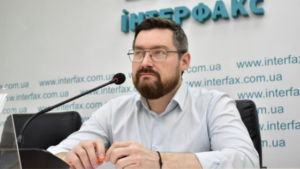
Brazil’s Ministry of Finance has raised its GDP growth forecast for 2025, but expects the economic upturn to slow down as a result of the country’s central bank’s tight monetary policy.
The GDP growth forecast for the current year has been raised to 2.5% from the 2.4% expected in May, and for 2026 it has been lowered to 2.4% from 2.5%.
The forecasts do not take into account the consequences of Washington’s introduction of 50% tariffs on all imports from Brazil, the Ministry of Finance notes. Earlier, US President Donald Trump announced that these tariffs would take effect on August 1.
“The tariffs are unlikely to have a significant impact on GDP growth in 2025, although certain industries may suffer quite severely,” the Ministry of Finance said in a statement.
In the first quarter of this year, Brazil’s GDP increased by 1.4% compared to the previous three months, the highest in three quarters. GDP growth in annual terms was 2.9%.
Earlier, the Experts Club information and analytical center made a video analysis of the prospects for the Ukrainian and global economies. For more details, see the video at https://youtu.be/kQsH3lUvMKo?si=F4IOLdLuVbYmEh5P

Ukraine’s real gross domestic product (GDP) grew by 1.1% in May 2025 compared to the same month in 2024, according to the Monthly Economic Monitor of the Institute for Economic Research and Policy Consulting (IER).
“The State Statistics Service has begun to publish data on industry more quickly, which allows us to assess the state of the Ukrainian economy more accurately. The new data show that growth rates remain low, although certain positive signals are already emerging,” according to the results of the study published on the IER website on Thursday.
According to the IER, real gross value added (GVA) growth in the manufacturing industry accelerated to 2.4% in May compared to 2024, up from 1.4% in April after a decline in March. This indicator was supported by more stable domestic demand.
In addition, companies faced fewer problems with access to electricity in May. According to the IER’s estimates, real GVA in electricity grew by 3% year-on-year in April and 4.8% in May. The decline in the extractive industry slowed to 10.4% (compared to 2024) in May due to a slight recovery in gas production and an increase in the extraction of construction raw materials.
According to the State Statistics Service, retail trade turnover grew by 4.8% in the first quarter. Data on wholesale trade has not yet been released, but the IER assumes that it continued to decline slightly due to the ongoing transition to direct sales and reduced use of warehouses due to shelling by the Russian army. Therefore, real GDP growth in trade in April and May is estimated at 2% year-on-year, although wages continue to rise rapidly.
Real GVA in agriculture declined by 2.4% year-on-year in May, which is close to April’s figures. This reflects a decline in livestock production by households, which was not offset by a slight increase in production by enterprises.
The IER estimates that real GVA in transport declined by 6.4% in May compared to the previous year. The slowdown in rail freight transport continued, and the impact of the suspension of gas transit persisted, although growth was observed in other transport sub-sectors.
In the first five months of 2025, Ukrzaliznytsia transported 22.2 million tons of cargo to ports. In particular, 12.7 million tons of grain were transported, of which 11.4 million tons were for export (to ports and the western border). This figure is 30% lower than in January-May 2024.
“The decline in rail transport reflects a seasonal trend in lower grain sales in anticipation of the new harvest,” the IER explains.
In addition, electricity imports rose by 3.6% in May compared to April, to 198,000 MWh. Most of the electricity was supplied from Hungary (40%). Electricity exports in May fell by 41% compared to April, to 93,000 MWh.
As for gas, the IER warns of the threat of a shortage if not all production capacities are restored after the Russian shelling. Currently, the shortage is estimated at approximately EUR 1 billion. As of mid-May, 6.14 billion cubic meters of gas had been accumulated in underground storage facilities (UGS).
As noted, the May level of UGS filling was the lowest in the last 11 years. Last month, 11.7 TWh, or more than 1.1 billion cubic meters, of gas was sent to UGS, which is 49% more than in May last year. Of this, about 500 million cubic meters came from abroad, while a year ago such inflows were close to zero.
“This indicates that the injection of Ukrainian-produced gas into storage facilities in May was not much lower than last year’s figure. The average daily injection rate in May was 376 GWh, or approximately 36 million cubic meters, and in the first 16 days of June, it rose to 463 GWh, or 45 million cubic meters,” the IER said.

This article presents key macroeconomic indicators for Ukraine and the global economy as of February 1, 2025. The analysis is based on current data from the State Statistics Service of Ukraine, the National Bank of Ukraine, the International Monetary Fund, the World Bank, and the UN. Marketing and Development Director at Interfax-Ukraine, Maksim Urakhin, PhD in Economics and founder of the Experts Club information and analytical center, presented an overview of current macroeconomic trends.
Macroeconomic indicators of Ukraine
In 2024, Ukraine’s economy showed signs of recovery despite the ongoing war and unstable geopolitical situation. According to updated data from the State Statistics Service, Ukraine’s real GDP grew by 3.3% in 2024, while nominal GDP amounted to approximately UAH 8.3 trillion. The deflator index was 11.6%.
“GDP growth demonstrates the resilience of the Ukrainian economy. Sectors focused on exports, domestic consumption, and infrastructure restoration have become the drivers of growth,” comments Maxim Urakin.
As of January 2025, annual inflation accelerated to 12.9%. Consumer prices rose by 1.2% in January compared to December, reflecting seasonal increases and currency stability.
According to the State Statistics Service, at the end of 2024, exports of goods amounted to $43.8 billion (+13.4%), imports to $67.4 billion (+5.7%), and the negative foreign trade balance to $23.6 billion.
“Despite high imports, primarily of energy and equipment, export activity is growing. Ukraine is strengthening its position in the agricultural and metallurgical markets,” says Maksim Urakyn.
As of February 1, 2025, according to the Ministry of Finance, Ukraine’s state and state-guaranteed debt amounted to $146.7 billion, including $100.1 billion in external debt. According to the National Bank of Ukraine, international reserves reached $45.3 billion, increasing by $400 million in January thanks to inflows from the EU and the IMF.
“The record level of reserves strengthens the stability of the hryvnia and allows the NBU to control currency fluctuations,” the economist emphasizes.
Global economy
According to the IMF’s January update, global economic growth in 2024 was 3.1%, with a forecast of 3.2% for 2025. Developing countries remain the main drivers, despite global instability.
According to the Bureau of Economic Analysis, the US economy grew by 2.5% in 2024. In January 2025, inflation stood at 3.1% year-on-year, with the Fed keeping its rate at 5.25-5.5%.
According to revised Eurostat data, the eurozone’s GDP grew by 0.4% in 2024, while inflation stood at 2.8% in January 2025. Germany, the EU’s largest economy, contracted by 0.1%, while Spain and Portugal made positive contributions to overall growth.
“Geopolitics, high borrowing costs, and weak demand in the G7 countries continue to hold back the recovery. Strong consumer demand is supporting the US economy. However, expensive credit is holding back investment activity, especially in real estate. The Chinese economy needs new stimulus, including tax reforms and support for small businesses, to offset the decline in investment in the construction sector,” Urakin explains.
The Indian economy continues to grow steadily: 8% in 2024, according to preliminary data from the Indian Ministry of Finance. The country is strengthening its position in global supply chains and increasing domestic production.
According to official statistics, China’s GDP grew by 5% in 2024. However, growth in the real estate sector remains weak and domestic demand is limited, which is holding back expansion potential.
Conclusion
The macroeconomic picture at the beginning of 2025 reflects a difficult but stable situation both in Ukraine and globally. Domestic GDP growth, slowing inflation, and strengthening reserves are positive signals for Ukraine. The global economy, in turn, is showing cautious growth amid continuing challenges.
“The key priorities for Ukraine remain ensuring macroeconomic stability, growing high value-added exports, accelerating digital transformation, and implementing structural reforms. This will enable the country to strengthen its position in the international economy as early as 2025,” concludes Maksim Urakin.
Head of the Economic Monitoring project, Candidate of Economic Sciences Maksim Urakin.
A more detailed analysis of Ukraine’s economic indicators is available in the monthly information and analytical products of the Interfax-Ukraine agency, Economic Monitoring.
Source: https://interfax.com.ua/news/projects/1072123.html
ECONOMY, EXPERTS CLUB, GDP, GEOPOLITICS, MACROECONOMICS, URAKIN

Reaching an agreement on a long-term ceasefire could accelerate Ukraine’s real GDP growth in 2025 to 3.5-5.5% year-on-year from 2.9% in 2024, thanks to improved economic sentiment and the start of large-scale reconstruction, which will offset the reduction in defense spending, while if the war continues, growth will slow to 2.5%, according to an updated forecast published by investment company Dragon Capital.
“Although weak economic activity in the first quarter of 2025 will be partially offset by better prospects for the energy sector, we have lowered our real GDP growth forecast for 2025 by 0.5 percentage points (percentage points) to 2.5% in the “continuing war” scenario,” the company said in a statement on Tuesday.
According to the statement, the forecast was also lowered by 0.5 percentage points in the event of a prolonged ceasefire.
According to Dragon Capital’s forecast, annual inflation will begin to decline in June-July amid continued easing of fundamental pressures and a high base of comparison in the food segment in the second half of last year.
“We forecast consumer inflation to slow to 8.1% y/y by the end of 2025 in the ‘ongoing war’ scenario and to 9-10% y/y in the ‘ceasefire’ scenario,” the release says.
Regarding the hryvnia exchange rate, Dragon Capital notes that in the first quarter of 2025, the NBU allowed the hryvnia to strengthen against the US dollar by 1.4% to 41.5 UAH/USD after a long period of controlled devaluation. The company believes that this strengthening of the hryvnia was the NBU’s response to high inflation, significant external financing, the global weakening of the dollar, and a seasonal decline in demand for foreign currency.
“We expect the NBU to return to a controlled and gradual weakening of the hryvnia in the second half of the year, when inflation rates begin to decline. However, given the significant amount of financial assistance, we have raised our forecast for NBU reserves to $59 billion (from $41 billion) and lowered our year-end exchange rate forecast to 44 UAH/USD (-4.4% y/y; previous forecast — 45 UAH/USD),” the release said.
Dragon Capital experts added that achieving a sustainable ceasefire will contribute to a slower devaluation of the hryvnia in the second half of the year, as fundamental pressure on prices will be higher and the balance of payments situation will improve due to a slowdown in private capital outflows and continued external financial assistance.
“Going forward, the exchange rate will depend on the volume of external financing and private capital flows, while the foreign trade deficit will remain significant due to structural changes in the economy,” the release said.
As reported earlier on Tuesday, the European Bank for Reconstruction and Development revised its forecast for Ukraine’s real GDP growth in 2025 to 3.3% from 3.5% expected in February and kept its forecast for 2026 at 5.0%, provided that Russia’s war against Ukraine ends.
At the end of February, the International Monetary Fund also revised its forecast for Ukraine’s economic growth in 2025, lowering it by 0.5 percentage points compared to its previous forecast to 2-3%, and the World Bank from 6.5% to 2%.
In April, the NBU worsened its forecast for Ukraine’s economic growth in the current year to 3.1% from 3.6% in its previous macroeconomic forecast in January, and in the next forecast, from 4.0% to 3.7%.

The Congressional Budget Office (CBO) forecasts a significant increase in the US national debt over the next 30 years. According to CBO’s forecast, the national debt will reach 100% of GDP in the current fiscal year and increase to a record 107% of GDP in fiscal year 2029. By 2025, the figure is expected to reach 156% of GDP.
“Rising public debt will slow economic growth, lead to higher interest payments to foreign debt holders, and pose significant risks to budget and economic projections,” the CBO said in its review.
Earlier this week, international rating agency Moody’s warned that import duties imposed by US President Donald Trump could prevent the country from getting its growing budget deficit under control.
The CBO expects the US budget deficit to increase to 7.3% of GDP by 2055 from 6.4% of GDP in 2024. The forecast for 2025 is 6.2% of GDP.
The CBO forecast assumes a slowdown in US economic growth this year to 2.1% from 2.8% in 2024. Earlier, Experts Club and Maksim Urakin released a video analysis of the state of debt in the world, see more details on the YouTube channel: https://youtu.be/gq7twYrWuqE